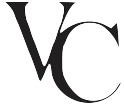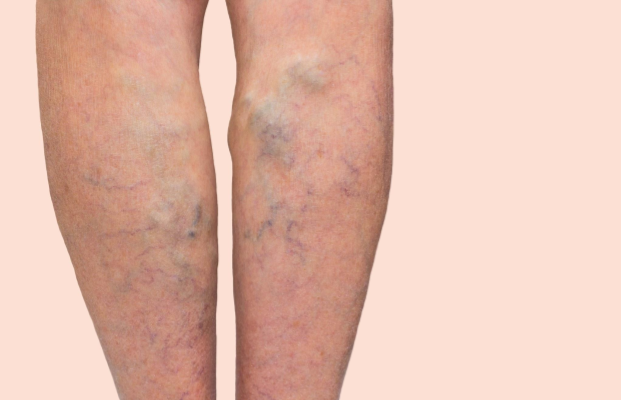What Are Varicose Veins?
Varicose veins are enlarged, twisted veins that can occur anywhere in the body but are most commonly found in the legs. They occur when the valves in the veins that normally keep blood flowing in one direction become damaged or weakened, allowing blood to flow backward and pool in the vein. This causes the vein to enlarge and twist.
Varicose veins can cause a number of symptoms, including pain, cramping, swelling, fatigue, and skin problems. In severe cases, they can lead to ulcers or blood clots.
What Causes Varicose Veins?
There are a number of factors that can contribute to the development of varicose veins, including:
- Age: As we get older, the valves in our veins become weaker and less able to function properly
- Pregnancy: The increased blood volume and pressure on the veins can cause varicose veins to form
- Obesity: Excess weight puts additional pressure on the veins
- Standing or sitting for long periods of time: This can cause the blood to pool in the veins
- Heredity: If your parents or grandparents had varicose veins, you’re more likely to develop them
Lifestyle Changes To Prevent Varicose Veins
Veins, like all life habits, are often something that changes with aging and having a physically inactive lifestyle. There are several things you can add to your daily routine that can help prevent varicose veins.
Lifestyle changes that help:
- Improving your leg strength by exercising.
- Refraining from crossing your legs for long periods of time.
- Elevating your legs whenever you’re resting or sleeping.
- Avoid standing for extended periods of time.
- Avoiding excessive exposure to the sun.
- Maintaining a healthy weight.
Improve Your Leg Strength by Exercising
Exercise improves your muscle tone and strength in your legs. This improves vein health because the muscles are better able to help pump blood up out of your legs back to the heart. Strong leg and calf muscles do a much better job of circulating blood and keeping the strain off of your veins and vein valves.
Improve Your Vein Elasticity with Cardio
Daily cardio, even low-impact cardio, will help to improve the elasticity of veins. With age, your veins become less elastic so this is one way to combat varicose veins caused by aging.
Cardio can be as simple as going for a brisk walk every day or taking some time out to go to the gym. Swimming, yoga, and bicycling are also great options to keep your blood moving. Regular exercise helps improve blood circulation and keeps your legs from becoming weak and achy, so make sure you are active every day.
Refraining From Crossing Your Legs for Long Periods of Time
Crossing your legs when sitting can cause blood to pool in your leg veins and may contribute to varicose veins. This pooling is thought to restrict blood flow and put extra, unnecessary pressure on veins. If you must cross your legs, do so for only a short period of time and make sure to take breaks often to move around.
Though there is no clear proof that crossing your legs does cause varicose and spider veins, it’s best to err on the side of caution. Sitting for long periods of time, in general, can cause vein health issues, so make sure you are getting up and walking around every so often.
Elevating Your Legs Whenever You’re Resting or Sleeping
One of the best things you can do is to elevate your legs whenever you’re resting or sleeping. This simple act can help reduce the pain and swelling associated with varicose veins, and it can also prevent new ones from forming. Elevating your legs makes it easier for blood to flow back to your heart and this takes a lot of pressure off of tired, overworked veins.
If you don’t have a lot of time to elevate your legs during the day, try doing it for at least 30 minutes before bedtime. You can also prop them up on a pillow when you’re lying down.
Avoiding Standing For Extended Periods of Time
Another effective way to keep varicose veins at bay is to avoid standing for extended periods of time. Standing for prolonged periods can cause blood to start pooling in the veins as they become overworked. When blood pools like this, the added pressure can damage valves and stretch out your vein walls. When these injuries occur, so do varicose veins.
If your job requires you to be on your feet for long hours, take a break every now and then to sit down and elevate your legs. It’s also important to wear comfortable, supportive shoes to reduce the strain on your legs.
Avoiding Excessive Exposure to The Sun
Although it may seem unrelated, avoiding excessive exposure to the sun is also important for preventing varicose veins. Direct sunlight can damage the skin and underlying tissue, weakening vein walls and valves. This damage makes it more difficult for blood to flow properly and can eventually lead to varicose veins.
If you spend a lot of time outdoors, make sure to wear loose, comfortable clothing that covers your legs. Also, apply sunscreen regularly to protect your skin from the harmful effects of the sun.
Maintaining a Healthy Weight
Maintaining a healthy weight is another important factor in preventing varicose veins. When you’re overweight, the added pressure on your legs and feet can cause vein damage and eventually lead to varicose veins. Losing even a small amount of weight can take a lot of strain off of your veins and reduce your risk of developing this condition.
If you’re struggling to lose weight, there are a few things you can do to make it easier. Cutting out processed foods and sugar is a great place to start. Eating more whole foods, like fruits, vegetables, and lean protein, can also help. Getting regular exercise is another key component of weight loss. Try to get at least 30 minutes of moderate exercise each day.
Making these lifestyle changes can be difficult, but they’re worth it to keep varicose veins away. With a little effort, you can enjoy healthy, beautiful legs for years to come.
Other Options to Prevent Varicose Veins
If lifestyle changes do not help alleviate the pain of varicose veins or if your pain becomes more severe, your doctor may recommend a surgical procedure. Sometimes unhealthy veins can be caused by health issues like diabetes or other inherited. When these become a daily struggle and begin affecting your self-esteem, developing some useful habits can help prevent varicose veins from forming. Popular preventive options for keeping blood flow evenly distributed include wearing compression stockings and getting minimal vein surgeries to name a few. Other vein treatment options may be sought out when varicose veins become severe and unsightly.
Compression Methods for Improving Circulation & Vein Health
Compression is used when the doctor gives the patient a special pair of pantyhose or stockings. The way compression works is by applying pressure over the areas that suffer from varicose veins so that the blood can flow more easily to the heart. These stockings place pressure on the legs.
Medical Problems Associated With Unhealthy Veins
In some cases, varicose veins can lead to blood clots and chronic inflammation. Varicose veins can also lead to sores or ulcers on the legs. In severe cases, veins could rupture. They may then suggest taking a more aggressive approach, such as surgery or laser treatments.
Lasers and Radiofrequency Vein Treatments
Other treatment options for varicose veins use radiofrequency or lasers to remove the veins or seal off blood flow. Such procedures may cause bruising or swelling immediately afterward. But with time, they improve the appearance of the legs. You should always talk to your doctor about your treatment options and the risks before choosing a method.
Other treatment options for varicose veins use radiofrequency or lasers to remove the veins or seal off blood flow. Such procedures may cause bruising or swelling immediately afterward. But with time, they improve the appearance of the legs. You should always talk to your doctor about your treatment options and the risks before choosing a method.
Surgical Procedures & Vein Treatments
The least common surgical procedure performed for varicose veins is called vein stripping, which is an operation that is used to remove the varicose veins through an incision of the veins. Vein-stripping surgeries are less common due to newer, less invasive options available today.
The most modern vein surgeries and vein treatments available for varicose veins include:
- LASER ABLATION
- Laser ablation is a process in vein therapy that removes material from a liquid surface by irradiating it with a laser beam. This is performed at a low laser flux and the material is heated by the absorbed laser energy, then evaporates or sublimates.
- VENOUS CLOSURE
- The VNUS Radiofrequency (RF) therapy is a minimally invasive procedure where the doctor performing the procedure inserts a very small catheter into the vein and delivers radiofrequency energy to the vein wall, causing the vein to shrink, collapse, and seal shut.
- SCLEROTHERAPY
- This minimally invasive procedure is used to treat spider veins. A solution of various concentrations, called tetradechol, is injected into the vein.
- AMBULATORY PHLEBECTOMY
- Ambulatory phlebectomy is an outpatient procedure usually performed under local anesthesia.
To learn more about the vein services offered in your area, contact the Vein Centre today at 615.269.9007 to get your free consultation!



